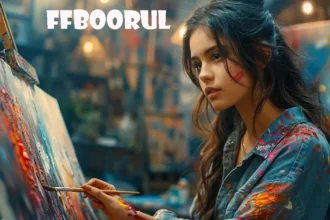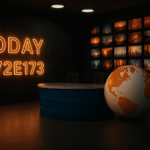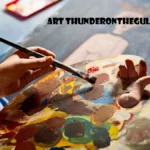The keyword imagesize:地藏王菩薩 1920×1080 refers to high-definition digital artwork of Kṣitigarbha Bodhisattva, created or displayed in a resolution of 1920×1080 pixels. This Full HD format is commonly used for wallpapers, spiritual videos, or digital altars in modern Buddhist practice.
Images marked with imagesize:地藏王菩薩 1920×1080 are often rich in symbolism, featuring the bodhisattva in calm meditation, holding a glowing jewel and a staff, surrounded by sacred elements. These details appear clearly in this resolution, making them ideal for both personal and ceremonial use.
Many people search for imagesize:地藏王菩薩 1920×1080 to use on desktops, prayer screens, or video backgrounds. It helps bring spiritual calm and inspiration through visual clarity and sacred representation.
With the blend of ancient Buddhist iconography and modern digital formats, imagesize:地藏王菩薩 1920×1080 continues to be a meaningful way to connect with the compassionate presence of this revered bodhisattva.
Who Is 地藏王菩薩 (Kṣitigarbha Bodhisattva)?
地藏王菩薩 (pronounced “Dìzàng Wáng Púsà”) is a deeply revered figure in Mahayana Buddhism, especially across East Asian countries such as China, Japan, and Korea. In Sanskrit, he is known as Kṣitigarbha, meaning “Earth Store” or “Essence of the Earth.”
This bodhisattva is unique because of his immense vow: he has promised not to attain Buddhahood until all hells are emptied and all beings are saved from suffering. His mission is filled with patience, courage, and mercy.
He is seen as the protector of souls in the afterlife, especially those suffering in hell, and is also believed to safeguard children, travelers, and the deceased. Many believers turn to him for comfort during grief or for blessings in hard times.
Worship of 地藏王菩薩 is most popular during Ullambana (Ghost Festival) and death anniversaries, when people pray for the peace of departed loved ones.
Spiritual Meaning Behind the Imagery
Each image of 地藏王菩薩 is filled with sacred meaning. He is usually shown as a peaceful and humble monk, dressed in simple robes instead of lavish ornaments. This reflects his vow of renunciation and humility.
In one hand, he holds a Khakkhara (monk’s staff) with metal rings that make noise—symbolizing his readiness to open the gates of hell and awaken suffering beings. In the other hand, he holds the Cintamani (wish-fulfilling jewel), which glows with spiritual energy and wisdom, offering hope and direction.
A soft golden halo is usually behind his head, showing his enlightened status. He may be sitting on a lotus throne, which symbolizes purity and transcendence above worldly pain.
The overall mood in these images is quiet, compassionate, and powerful. Whether standing or sitting, his expression remains full of patience and serenity, inviting peace into the viewer’s heart.
Importance of 1920×1080 Image Size
The term 1920×1080 refers to Full HD (High Definition) image resolution. This format is ideal for modern digital devices including smartphones, laptops, TVs, and projectors.
Images at this resolution offer a clear, sharp visual quality. For religious or spiritual art, this means all the small details—the threads of his robe, the glow of his jewel, the symbols in the background—can be seen clearly.
This size is perfect for:
- Digital wallpapers on phones or desktops
- Display in virtual shrines or Buddhist temples
- Spiritual YouTube or livestream backgrounds
- Meditation app visuals
- Printable posters for home or temple decoration
A well-designed 1920×1080 image gives spiritual energy while preserving artistic beauty, especially in religious contexts.
Common Themes in 1920×1080 Images
The design and composition of 地藏王菩薩 images in this format often follow strong thematic elements. In many Full HD artworks, the bodhisattva is shown in hell realms, guiding spirits toward light. This dramatic background reminds us of his promise to save even those in the deepest suffering.
In other versions, he appears in peaceful landscapes with clouds, stars, or distant temples, reflecting a heavenly atmosphere and his meditative presence.
Some images focus entirely on his facial features, radiating a soft golden glow, while others zoom out to show surrounding elements like lotus ponds, fire, or spirits kneeling before him.
The balance of light and dark is also significant—artists use light to show hope, and darkness to represent suffering that he transforms. All these elements make 1920×1080 images both spiritual and visually stunning.
Usage of These Images in Modern Times
With the rise of digital spirituality, images of 地藏王菩薩 are now being used more than ever in modern, meaningful ways. Many Buddhists place these Full HD images as their phone or desktop wallpaper, believing it brings mental calm and spiritual support throughout the day.
Temples use these images during Dharma talks, chanting events, or memorial services, projecting them on big screens or sharing them in online video services.
Some YouTube channels use these images in their chanting videos, animation stories, or guided meditations, making spiritual teachings more engaging and accessible.
In apps dedicated to Buddhism or mindfulness, these images often serve as backgrounds or icons. Even people outside the Buddhist community appreciate these artworks for their peaceful tone and cultural beauty.
How to Find or Generate These Images
There are many places online to find high-quality images of 地藏王菩薩 in 1920×1080 format.
- Buddhist websites often offer free downloads for followers.
- Art platforms like Pinterest, ArtStation, or DeviantArt feature original works by artists.
- You can also find printable posters or framed art on Etsy or Amazon.
If you want a custom creation, AI tools like Leonardo.ai, Midjourney, or Hailuo.ai can generate beautiful and respectful imagery based on prompts. Just describe the setting, resolution, and key elements.
While using these images, it’s important to be respectful. Avoid modifying them in ways that may be seen as offensive, and always credit the artist when required. These aren’t just pictures—they are sacred symbols of spiritual support.
Conclusion
The keyword imagesize:地藏王菩薩 1920×1080 represents more than just a visual file—it is a digital form of devotion and a modern connection to timeless Buddhist values. These Full HD images preserve the sacred details that give meaning to each symbol and pose of the bodhisattva.
Whether used for personal meditation, temple presentations, or spiritual videos, imagesize:地藏王菩薩 1920×1080 provides a clear, respectful, and inspiring way to engage with Buddhist art in the digital world.
As technology grows, the ability to generate or access these high-resolution images helps keep ancient traditions visually alive. The wide use of imagesize:地藏王菩薩 1920×1080 shows how spirituality can adapt beautifully with modern tools.
For anyone seeking peace, protection, or inner strength, these images offer more than just beauty—they serve as a reminder of Kṣitigarbha’s vow and the enduring light of compassion.
FAQs
What does imagesize:地藏王菩薩 1920×1080 mean?
It refers to digital images of Kṣitigarbha Bodhisattva created or displayed in 1920×1080 Full HD resolution.
Where can I find imagesize:地藏王菩薩 1920×1080 for free?
You can find them on Buddhist art websites, Pinterest, or use AI platforms like Leonardo.ai to create your own.
Why is 1920×1080 resolution important for Buddhist images?
It ensures the spiritual and symbolic details are clear and suitable for modern displays and prints.
Can I use imagesize:地藏王菩薩 1920×1080 for meditation videos?
Yes, this resolution is ideal for YouTube, apps, or background visuals in spiritual content.
Is it respectful to use imagesize:地藏王菩薩 1920×1080 as wallpaper?
Yes, as long as used with reverence and without inappropriate editing or commercial misuse.
Also Read:
Purple Electra X Skin: Best Features, User Reviews, and Where to Download
TJMV106 Use Cases: Real-World Examples in Healthcare, Finance, and More
Immediate 0.3 Folex: How This AI Platform Changes Crypto and Forex Trading
Victor Davis Hanson Accident: Real-Life Risk Behind an Academic Giant’s Calm Demeanor
Leyah Amore Harris: Why Her Short Life Matters in Conversations About Child Loss















